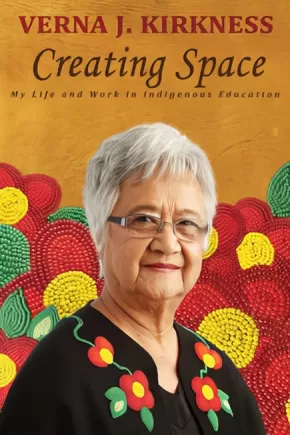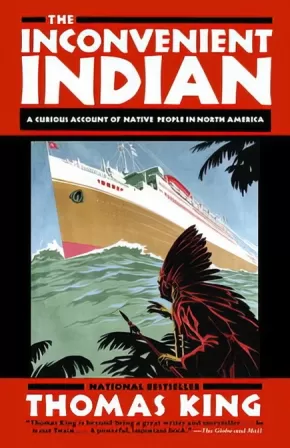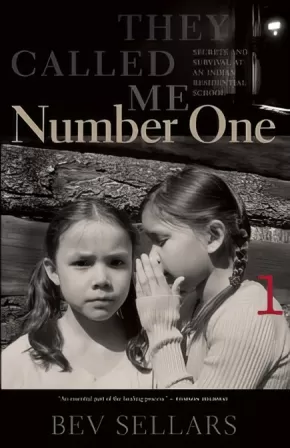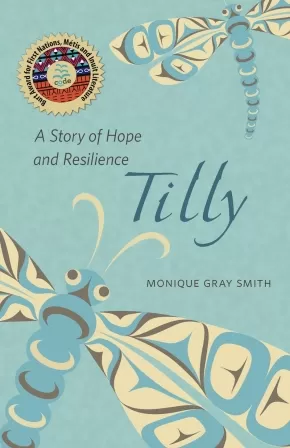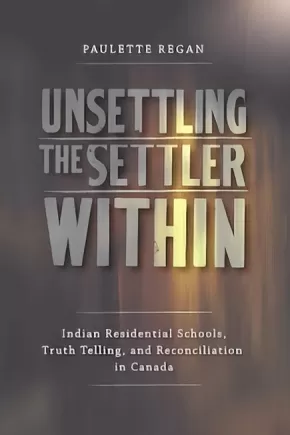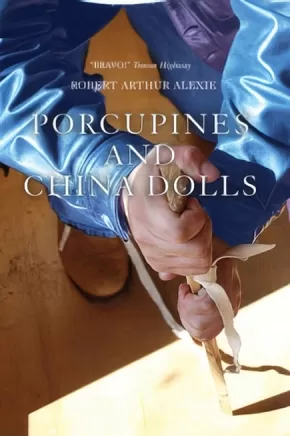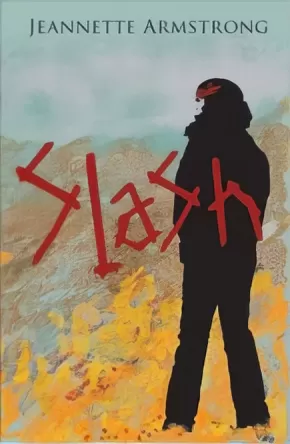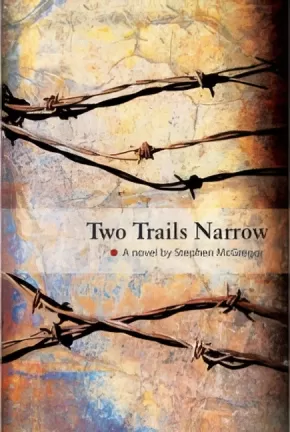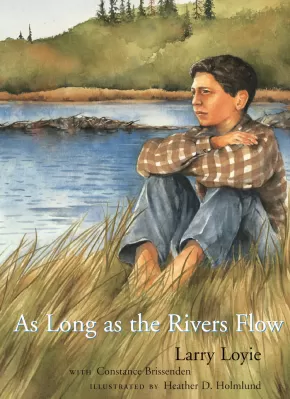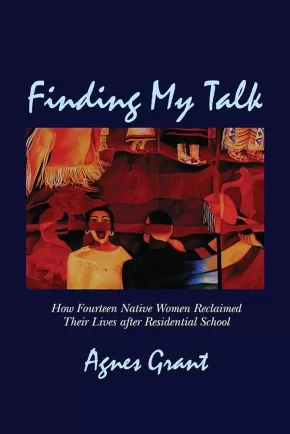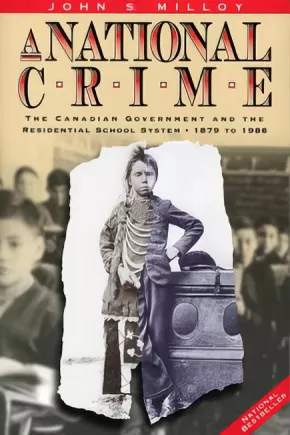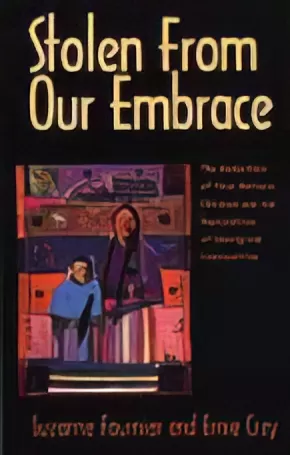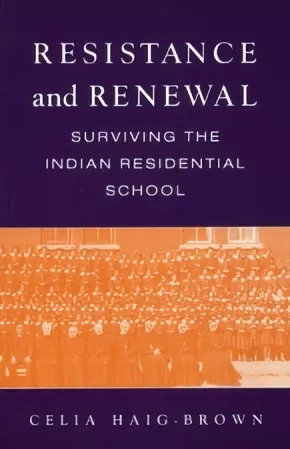Indian Residential Schools and Reconciliation Teacher Resource Guide Social Studies 10
These learning resources are designed to help Grade Ten students attain an understanding of the history of the relationship between Indigenous and non-Indigenous people over Canada’s history. They are for the instruction of youth from all cultural backgrounds, not just Indigenous students.
While the instructional activities are presented in a structured format, they are intended to be flexible in their use. They allow for the application of both a First Peoples Pedagogy and the changing BC Curriculum.
The activities are designed to be adaptable and flexible. Teachers can follow the sequence of lessons, they can use particular lessons or sections as stand-alone activities, or they can adapt the activities to meet their own curriculum planning requirements and the learning needs of their students.
Visit the FNESC web site to download or order a hard copy.
Synopsis:
Margaret can't wait to see her family, but her homecoming is not what she expected.
Two years ago, Margaret left her Arctic home for the outsiders' school. Now she has returned and can barely contain her excitement as she rushes towards her waiting family -- but her mother stands still as a stone. This strange, skinny child, with her hair cropped short, can't be her daughter. "Not my girl!" she says angrily.
Margaret's years at school have changed her. Now ten years old, she has forgotten her language and the skills to hunt and fish. She can't even stomach her mother's food. Her only comfort is in the books she learned to read at school.
Gradually, Margaret relearns the words and ways of her people. With time, she earns her father's trust enough to be given a dogsled of her own. As her family watches with pride, Margaret knows she has found her place once more.
Based on the true story of Margaret Pokiak-Fenton, and complemented by evocative illustrations, Not My Girl makes the original, award-winning memoir, A Stranger at Home, accessible to younger children. It is also a sequel to the picture book When I Was Eight. A poignant story of a determined young girl's struggle to belong, it will both move and inspire readers everywhere.
Reviews
"For kids who are ready to tackle the not so sunny portion of history, this is a deeply felt exploration of identity and cultural crisis rendered as a deep, satisfying sigh appropriate for sharing aloud." — BCCB The Bulletin of the Center for Children's Boo, August 2014
"Culturally relevant, accurate, and soft, painterly illustrations depict the sequence of events and reinforce the bittersweet and tender reunion of Olemaun with her family."— Natalie Braham, School Library Journal, September 2014
Educator Information
Recommended for ages 6 to 9.
This book is available in French: Ou est ma fille?
Additional Information
36 pages | 9.00" x 9.00"
Synopsis:
Verna J. Kirkness grew up on the Fisher River Indian reserve in Manitoba. Her childhood dream to be a teacher set her on a lifelong journey in education as a teacher, counsellor, consultant, and professor.
As the first cross-cultural consultant for the Manitoba Department of Education Curriculum Branch she made Cree and Ojibway the languages of instruction in several Manitoba schools. In the early 1970s she became the first Education Director for the Manitoba Indian Brotherhood (now the Assembly of Manitoba Chiefs) and then Education Director for the National Indian Brotherhood (now the Assembly of First Nations). She played a pivotal role in developing the education sections of Wahbung: Our Tomorrows, which transformed Manitoba education, and the landmark 1972 national policy of Indian Control of Indian Education. These two major works have shaped First Nations education in Canada for more than 40 years.
In the 1980s she became an assistant professor at the University of British Columbia where she was appointed Director of the Native Teacher Education Program, founded the Ts’‘Kel Graduate Program, and was a driving force behind the creation of the First Nations House of Learning. Honoured by community and country, Kirkness is a visionary who has inspired, and been inspired by, generations of students.
Like a long conversation between friends, Creating Space reveals the challenges and misgivings, the burning questions, the successes and failures that have shaped the life of this extraordinary woman and the history of Aboriginal education in Canada.
Synopsis:
Rich with dark and light, pain and magic, The Inconvenient Indian distills the insights gleaned from Thomas King's critical and personal meditation on what it means to be "Indian" in North America, weaving the curiously circular tale of the relationship between non-Natives and Natives in the centuries since the two first encountered each other. In the process, King refashions old stories about historical events and figures, takes a sideways look at film and pop culture, relates his own complex experiences with activism, and articulates a deep and revolutionary understanding of the cumulative effects of ever-shifting laws and treaties on Native peoples and lands.
This is a book both timeless and timely, burnished with anger but tempered by wit, and ultimately a hard-won offering of hope--a sometimes inconvenient but nonetheless indispensable account for all of us, Indian and non-Indian alike, seeking to understand how we might tell a new story for the future.
Awards
- 2014 Burt Award Second Place Winner
Educator Information
This resource is also available in French in a pocket-sized format: L'Indien malcommode: Un portrait inattendu des Autochtones d'Amerique du Nord (format poche)
Additional Information336 pages | 5.18" x 7.99"
Synopsis:
Like thousands of Aboriginal children in Canada, and elsewhere in the colonized world, Xatsu'll chief Bev Sellars spent part of her childhood as a student in a church-run residential school.
These institutions endeavored to "civilize" Native children through Christian teachings; forced separation from family, language, and culture; and strict discipline. Perhaps the most symbolically potent strategy used to alienate residential school children was addressing them by assigned numbers only-not by the names with which they knew and understood themselves.
In this frank and poignant memoir of her years at St. Joseph's Mission, Sellars breaks her silence about the residential school's lasting effects on her and her family-from substance abuse to suicide attempts-and eloquently articulates her own path to healing. 'Number One' comes at a time of recognition-by governments and society at large-that only through knowing the truth about these past injustices can we begin to redress them.
Awards
- 2014 Burt Award Third Place Winner
Educator Information
Grades 10-12 BC English First Peoples resource for the unit Place-Conscious Learning - Exploring Text through Local Landscape.
Additional Information
256 pages | 5.67" x 8.20"
Synopsis:
Tilly has always known she’s part Lakota on her dad’s side. She’s grown up with the traditional teachings of her grandma, relishing the life lessons of her beloved mentor. But it isn’t until an angry man shouts something on the street that Tilly realizes her mom is Aboriginal, too—a Cree woman taken from her own parents as a baby.
Tilly feels her mother’s pain deeply. She’s always had trouble fitting in at school, and when her grandma dies unexpectedly, her anchor is gone. Then Abby, a grade seven classmate, invites her home for lunch and offers her “something special” to drink. Nothing has prepared Tilly for the tingling in her legs, the buzz in her head and the awesome feeling that she can do anything. From then on, partying seems to offer an escape from her insecurities. But after one dangerously drunken evening, Tilly knows she has to change. Summoning her courage, she begins the long journey to finding pride in herself and her heritage. Just when she needs it most, a mysterious stranger offers some wise counsel: “Never question who you are or who your people are. It’s in your eyes. I know it’s in your heart.”
Loosely based on author Monique Gray Smith’s own life, this revealing, important work of creative non-fiction tells the story of a young Indigenous woman coming of age in Canada in the 1980s. With compassion, insight and humour, Gray Smith illuminates the 20th-century history of Canada’s First Peoples—forced displacement, residential schools, tuberculosis hospitals, the Sixties Scoop. In a spirit of hope, this unique story captures the irrepressible resilience of Tilly, and of Indigenous peoples everywhere.
Awards
- 2014 Burt Award Winner
Reviews
“What a gorgeous read! Reminiscent of Lee Maracle’s Will’s Garden and Ruby Slipperjack’s Little Voice, Tilly will bring strength, comfort and peace to all who read it. Let it discover and inspire you, too. Wow! I've been waiting for a book like this for years. Mahsi cho, Monique Gray Smith, for digging so deep to create something so loving and nurturing for the world.” —Richard Van Camp, author of The Lesser Blessed and The Moon of Letting Go
"Gray Smith intricately pieces together stories, traditional teachings and hard-earned personal wisdom, creating a hand-stitched quilt you can’t help but wrap yourself in—a quilt filled with optimism and the assurance that no matter how lost we are, hope, love and guidance surround us at every turn. Delicate with the handling of mature details, but fiercely candid with emotion, Tilly is an ideal resource not only for youth, but also for those who are easily triggered, while its universality will be appreciated by a wider audience. A brave new voice ready to take her place among the great contemporary storytellers, Gray Smith breaks her own trails as she explores what it means to be Indigenous in a modern world." —Christy Jordan-Fenton, author of Fatty Legs, A Stranger at Home and When I Was Eight
Educator Information
Recommended Ages: 15-18.
Grades 10-12 English First Peoples resource for units on Childhood through the Eyes of Indigenous Writers and Exploring Text through Local Landscape.
Additional Information
208 pages | Ages 14+
Synopsis:
In 2008 the Canadian government apologized to the victims of the notorious Indian residential school system, and established a Truth and Reconciliation Commission whose goal was to mend the deep rifts between Aboriginal peoples and the settler society that engineered the system. In Unsettling the Settler Within, Paulette Regan, a former residential-schools-claims manager, argues that in order to truly participate in the transformative possibilities of reconciliation, non-Aboriginal Canadians must undergo their own process of decolonization. They must relinquish the persistent myth of themselves as peacemakers and acknowledge the destructive legacy of a society that has stubbornly ignored and devalued Indigenous experience. With former students offering their stories as part of the truth and reconciliation processes, Regan advocates for an ethos that learns from the past, making space for an Indigenous historical counter-narrative to avoid perpetuating a colonial relationship between Aboriginal and settler peoples. A powerful and compassionate call to action, Unsettling the Settler Within inspires with its thoughtful and personal account of Regan's own journey, and offers all Canadians -- Indigenous and non-Indigenous policymakers, politicians, teachers, and students -- a new way of approaching the critical task of healing the wounds left by the residential school system.
Synopsis:
James Nathan and Jake Noland have been best friends for their entire lives. Like most residents in their small northern Gwich’in community, they like to get drunk, get high and sleep around. It helps them forget the past—a horrific past full of painful memories. At times just one bullet to the temple away from a self-inflicted death, James and Jake fumble through life, tormented and haunted by the demons of their residential school abuse.
The decision by one man to publicly disclose his abuse causes upheaval within the community and forces other victims to consider their options: either share their secret and begin healing, or maintain their silence and suffer alone. Raw and gripping, Porcupines and China Dolls is impossible to put down.
Educator Information
Resource for English First Peoples 11-12.
Additional Information
312 pages | 6.00" x 9.00"
Synopsis:
Irreverently funny and brutally honest Governor General's Award-winning play about loss and redemption. Cast of 2 women and 4 men.
Grades 10-12 English First Peoples resource for the units Childhood through the Eyes of Indigenous Writers and Further Steps toward Reconciliation.
96 pages | 5.50" x 8.50"
Synopsis:
Slash is Jeannette Armstrong's first novel. It poignantly traces the struggles, pain and alienation of a young Okanagan man who searches for truth and meaning in his life. Recognized as an important work of literature, Slash is used in high schools, colleges and universities.
Additional Information
252 pages | 5.50" x 8.50"
Synopsis:
Two Trails Narrow follows the lives of two Algonquin half-breeds, Ryman McGregor and Abraham Scott, who united as wannabe escapees from the harsh hands of the Jesuit priests at St. Xavier's Residential School outside Spaniards Bay on Lake Ontario. With the help of a kind man and Ryman's sister, they are successful in their escape from the priests and their RCMP trackers. Arriving home on the reserve had its good fortunes but also marked their partition. Their reunion takes place years later, when they are selected to serve as valuable Corporals of one of the best Canadian commando units in WWII. Set against the residential school experience for Native children and the looming shadow of the Second World War, Two Trails Narrow recounts the pain of a young generation of Natives who were pulled into the vortex of forced battle at home and overseas. Through the eyes of two Native soldiers, Ryman McGregor and Abraham Scott, Two Trails Narrow is a remembrance to the courage and depth of the human spirit in an era of hostilities.
Synopsis:
In the 1800s, the education of First Nations children was taken on by various churches, in government-sponsored residential schools. Children were forcibly taken from their families in order to erase their traditional languages and cultures.
As Long as the Rivers Flow is the story of Larry Loyie's last summer before entering residential school. It is a time of learning and adventure. He cares for an abandoned baby owl and watches his grandmother make winter moccasins. He helps the family prepare for a hunting and gathering trip.
Sequel: Goodbye Buffalo Bay
Awards
- In 2006, As Long As the Rivers Flow was the award recipient for First Nation Communities Read.
- Winner of the Norma Fleck Award for Canadian Children's Non-Fiction
Educator Information
Recommended for ages 7 to 11.
Curriculum Connections: Indigenous Studies, Social Studies, Science and Nature.
This resource is also available in French: Tant que couleront le rivieres.
Additional Information
48 pages | 7.25" x 10.25"
Synopsis:
When residential schools opened in the 1830s, First Nations envisioned their own teachers, ministers, and interpreters. Instead, students were regularly forced to renounce their cultures and languages and some were subjected to degradations and abuses that left severe emotional scars for generations. In Finding My Talk, fourteen aboriginal women who attended residential schools, or were affected by them, reflect on their experiences. They describe their years in residential schools across Canada and how they overcame tremendous obstacles to become strong and independent members of aboriginal cultures and valuable members of Canadian society. Biographies include: Eleanor Brass, Journalist, Plains Cree, Saskatchewan, Rita Joe, Poet/Writer, Mi?kmaq, Nova Scotia, Alice French, Writer, Inuit, Northwest Territories Shirley Sterling, School Administrator/Storyteller, Nlakapmux, British Columbia, Doris Pratt, Education Administrator/Language Specialist, Dakota, Manitoba, Edith Dalla Costa, School Counsellor, Woodland Cree, Alberta, Sara Sabourin, Community Worker, Ojibway, Ontario. Dr. Agnes Grant worked with the Native Teacher Training programs at Brandon University, Manitoba, for thirty years. As an administrator and professor, she spent much of her time in remote communities. Dr. Grant is the author of No End of Grief: Indian Residential Schools in Canada and three other books. She lives in Winnipeg.
Authenticity Note: This book has received the Authentic Indigenous Text label because of the contributions of the fourteen Indigenous women who share their stories in it. It is up to readers to determine if this will work as an authentic text for their purposes.
Synopsis:
“I am going to tell you how we are treated. I am always hungry.” — Edward B., a student at Onion Lake School (1923)
“[I]f I were appointed by the Dominion Government for the express purpose of spreading tuberculosis, there is nothing finer in existence than the average Indian residential school.” — N. Walker, Indian Affairs Superintendent (1948)
For over 100 years, thousands of Aboriginal children passed through the Canadian residential school system. Begun in the 1870s, it was intended, in the words of government officials, to bring these children into the “circle of civilization,” the results, however, were far different. More often, the schools provided an inferior education in an atmosphere of neglect, disease, and often abuse.
Using previously unreleased government documents, historian John S. Milloy provides a full picture of the history and reality of the residential school system. He begins by tracing the ideological roots of the system, and follows the paper trail of internal memoranda, reports from field inspectors, and letters of complaint. In the early decades, the system grew without planning or restraint. Despite numerous critical commissions and reports, it persisted into the 1970s, when it transformed itself into a social welfare system without improving conditions for its thousands of wards. A National Crime shows that the residential system was chronically underfunded and often mismanaged, and documents in detail and how this affected the health, education, and well-being of entire generations of Aboriginal children.
Additional Information
424 pages | 6.00" x 9.00"
Synopsis:
This important and timely book is a balance of the most gruesome elements of assimilation: church-run schools, the child welfare system, survivors of sexual abuse, and Foetal Alcohol Syndrome counter-balanced against heroic stories of children who survived, fought back, and found their way home.
Harrrowing stories are presented wherever possible in the first person, by Fournier, a journalist, and Cree, a B.C native spokesperson and activist, and a stolen child himself. The final message is optimistic, suggesting that redress and reconciliation could enrich the entire country by creating healthy aboriginal communities.
Synopsis:
One of the first books published to deal with the phenomenon of residential schools in Canada, Resistance and Renewal is a disturbing collection of Native perspectives on the Kamloops Indian Residential School(KIRS) in the British Columbia interior. Interviews with thirteen Natives, all former residents of KIRS, form the nucleus of the book, a frank depiction of school life, and a telling account of the system's oppressive environment which sought to stifle Native culture.
Winner of the Roderick Haig-Brown Regional Prize (BC Book Prize) in 1989.
Now in its 8th printing.
Authenticity Note: This book has received the Authentic Indigenous Text label because of the interviews and contributions of Indigenous peoples in this work, whom the author thanks and acknowledges in the introduction of the book. It is up to readers to determine if this an authentic work for their purposes.




